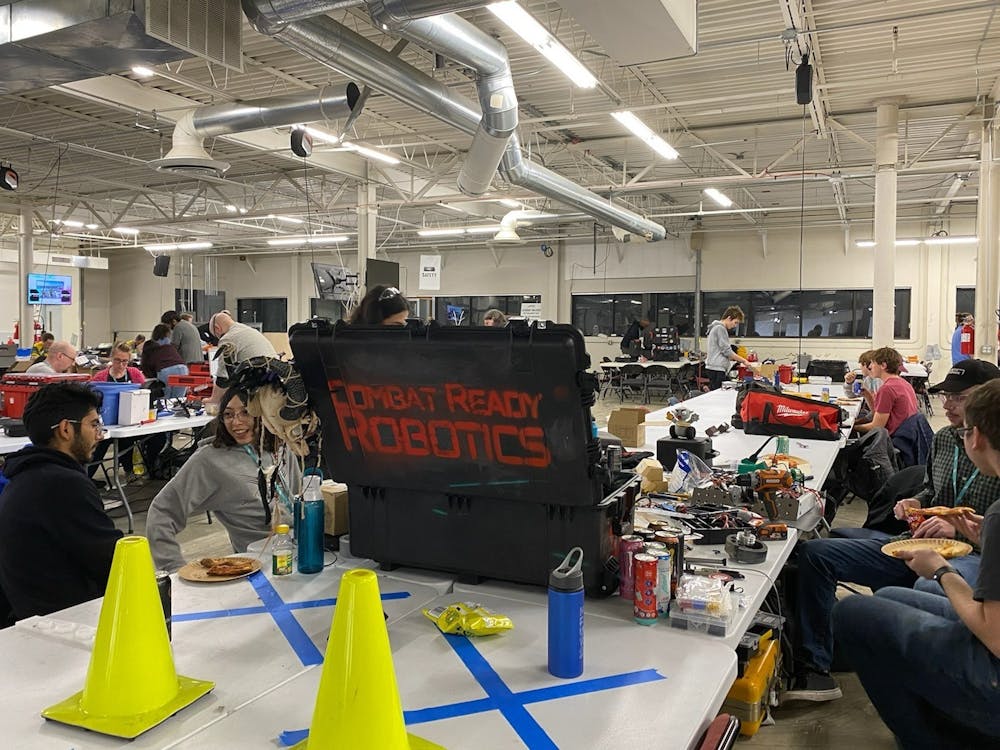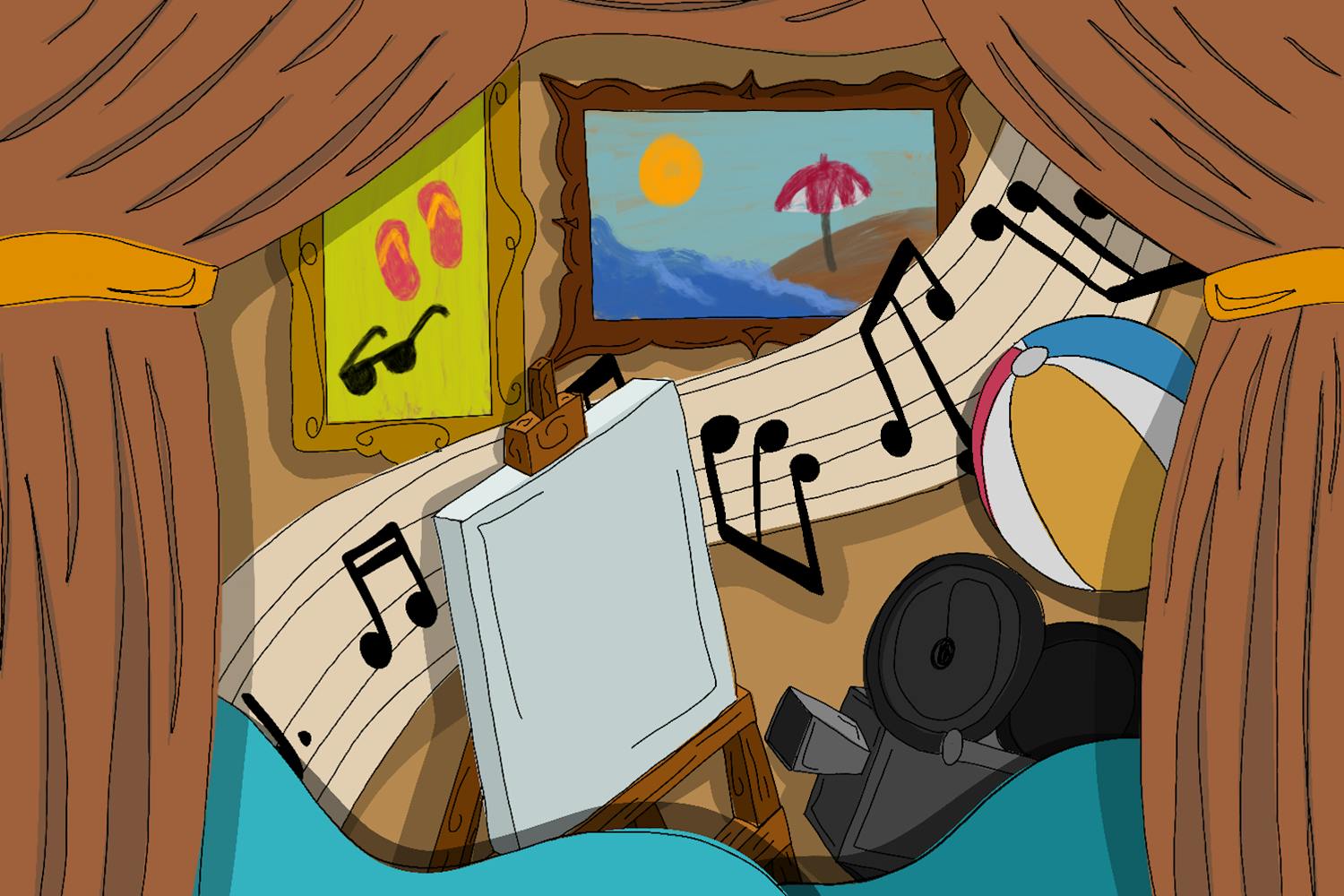Two robots — armed with buzz saws, metal chains and hammers — enter an arena as the crowd cheers. Only one will come out operational and be deemed champion.
That's what happens in Combat Ready Robotics at ASU, a club that has its members use their skills to create robots designed for mayhem in a fighting arena, pinned against another combat-ready robot. The club participates in national competitions, and they hope to be on the televised robot combat competition "BattleBots," a robot fighting tournament television show on Discovery Channel and its streaming service Discovery Plus. The winning team earns a cash prize of $25,000.
Caleb Hecht, a junior studying manufacturing engineering and vice president of the club said a lot of thinking goes into creating a combat robot. When it comes to the design, it needs to be durable, have easily changeable parts and be able to take a hit while still being able to function
"You're putting parts further inside the robot, you're shock mounting them, you're making sure you use a certain type of bolts, you have (to) designate a break off points," Hecht said. "It's a lot; a lot goes into it."
Hecht recently participated in "BattleBots" on Team Banshee, a team that created a heavyweight flipper-robot named after the female spirit of Irish folklore. He said he plans on using what he learned from that experience to lead a team at ASU.
“One of the best things about BattleBots (is) it is the most open and welcoming place,” Hecht said. “I worked on a 250-pound robot and I just walked up to every single team and I said, ‘Show me how your robot works,’ and they showed me exactly their weaknesses and how the robot works.”
In most robot fighting competitions, weapons such as buzz saws, hammers, spinning chains, flippers and flamethrowers are accepted. The goal in any competition is to make the opponent's robot become non-operational.
The club officially started at the beginning of this semester. They were originally part of Sun Devil Robotics Club but decided to branch off into their own organization to differentiate themselves and get more school funding.
The club hosts Sun Devil Smackdown, a combat robotics competition at ASU, which gives students the chance to put their hard work and dedication to the test, pinning metal against metal to see who will reign victorious. If a team loses twice, they are out of the competition.
The club has four different weight divisions for competitions: beetleweight-three pounds, hobbyweight-12 pounds, featherweight-30 pounds, and heavyweight-250 pounds.
Some seasoned members of Combat Ready Robotics have used their knowledge and experience and already competed in a competition dubbed Norwalk Havoc Robot League in Connecticut. The overall winner of the 30-pound weight class competition wins $15,000 and the Golden Dumpster trophy.
Hecht said the majority of the robot-building process is spent using computer-aided design (CAD), which is a 3D blueprint of the robot. Currently, all of the club's robots are still in the CAD phase.
He said once everything is created digitally, the club will order parts and begin building the physical robot. As long as the CAD step is done well, the building is the easiest part.
The funding for the parts comes from the University, so there is no cost to the students who join the club, said Tyler Wright, treasurer of Combat Ready Robotics and a sophomore studying aerospace engineering.
"I think a pretty good incentive for more people to join the club is that it's basically free," Wright said. "It's free fun."
Those that are interested in joining are taught everything they need to know from the ground up including 3D modeling, which can ultimately be tied back to their own classes.
“I like it. Very hands-on, teaches me a lot more than what my classes are teaching me,” said M Miller, a freshman studying astrophysics.
The club is open to students from all majors. Hecht said non-engineering majors are vital members of the team who can see things engineering members don't.
"We are open to all kinds of students; we have computer science majors, we have astronomy majors (and) we have creative writing majors, so there's a place here for everyone," Hecht said. "At the beginning of each workshop, I ask all the non-engineers to raise their hand, and I tell people, 'those are the people on our teams,' because they are able to focus on things that engineers overlook."
Edited by Kaden Ryback, Wyatt Myskow and Luke Chatham.
Reach the reporter at Twildma1@asu.edu and follow @TyWildman1 Twitter.
Like The State Press on Facebook and follow @statepress on Twitter.

Tyson Wildman is a reporter for the State Press SciTech desk. He is excited to begin his journey into journalism and continue to hone his skills as a writer. He is pursuing a bachelor's degree in Mass Communication and Media Studies.




